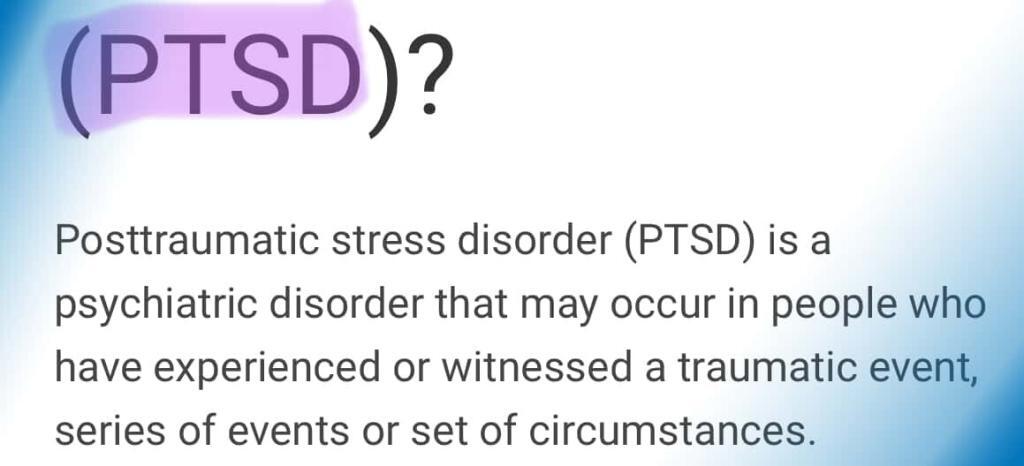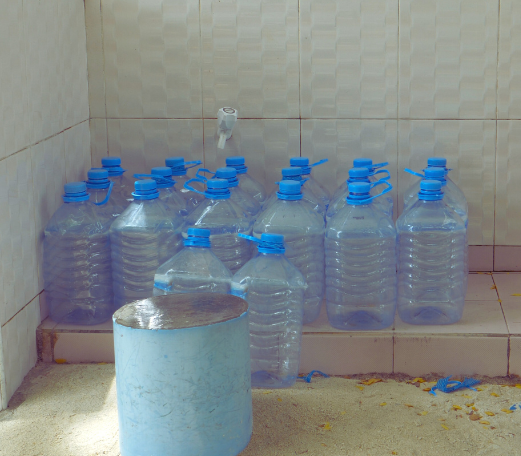Disclaimer: The following article is intended for informational purposes only and is not to be used as a practical guide for actual situations involving waterboarding. Waterboarding is considered a form of torture and is illegal and inhumane. The information provided is based on theoretical research and personal accounts and does not guarantee survival in a real-life situation.
The techniques discussed should not be practiced without professional guidance and supervision due to the potential for serious harm or fatality. The publisher does not endorse or encourage the practice or use of waterboarding in any form or situation. Always prioritize legal and ethical practices in all situations.
The first step in understanding how to survive waterboarding, a form of torture, is recognizing its grave implications. Waterboarding is a form of torture designed to break the human spirit. The fear of drowning and the uncertainty of escape are overwhelming, and you wonder how you could possibly survive.
In today’s unpredictable world, being prepared for anything is essential. This article delves into the dark realm of waterboarding, revealing crucial tips and strategies that could mean the difference between life and death.
Whether driven by curiosity or genuine concern, understanding how to survive waterboarding can arm you with invaluable knowledge and mental fortitude.
So read on, and unlock the secrets of survival in the face of this nightmarish experience.

In This Guide:

What Is Waterboarding?
Waterboarding is a form of interrogation often classified as torture. It simulates the sensation of drowning, inducing extreme psychological and physical distress.
Waterboarding is when someone makes you lie on your back, and places a wet rag over your face. Suddenly, cold water starts pouring over the cloth, making it difficult for you to breathe.
Panic attacks set in as you gasp for air, but the water keeps coming. At this point I bet you wish you had read up on an article on how to survive waterboarding.
So how does waterboarding work? Waterboarding is an extreme form of interrogation that has been widely debated for its ethical implications.
The cloth restricts breathing, and the sensation of water on the face creates a panic response in the person being interrogated.
The sensation of drowning is terrifying, and the person being waterboarded usually experiences extreme fear, panic, and a sense of suffocation.
Waterboarding has been used by various government agencies and military forces worldwide, but it’s now widely considered a form of torture.
It’s a cruel and inhumane practice.
Many countries, including the United States, have banned it, and organizations like the UN and Amnesty International have condemned it. But that doesn’t mean no one’s doing it.
Some people argue that it works for getting information. Still, research going back to World Wars I and II has shown that torture often leads to unreliable intelligence because victims might say anything to make it stop.

What Are The Effects Of Waterboarding?
The effects of waterboarding are debilitating, both psychologically and physically. Short-term impacts include panic, while long-term repercussions can be as severe as death or PTSD.
Waterboarding can damage a person, both physically and mentally. Some pretty infamous cases, like those involving Khalid Sheikh Mohammed and Abu Zubaydah, show just how bad it can get.
Khalid Sheikh Mohammed was waterboarded a whopping 183 times. He was instrumental in the 9/11 attacks, so take that as you may. It did cause him severe pain and distress, but it also led to many false confessions.
So, it makes you wonder if this torture technique is even helpful in getting reliable info.
Abu Zubaydah, another big name in al-Qaeda. Before being transferred to Guantánamo Bay, Zubaydah was tortured in various ways at CIA “black sites.” He went through waterboarding 83 times.
Just like with Khalid Sheikh Mohammed, this left some serious psychological trauma on him. We’re talking about PTSD, anxiety, and other mental health issues.
And guess what? Waterboarding him also led to false confessions, making you question the whole point of using such a brutal practice.
So, to sum it up, waterboarding can have some seriously effects including death. It can cause significant pain, suffocation, and long-lasting health problems.
On top of that, it can leave people with PTSD, anxiety, and other mental health disorders.
Considering the cases mentioned and others, it’s hard to believe that waterboarding is even effective in getting reliable information.
The experience of being waterboarded can be so traumatic that it stays with a person for the rest of their life, causing them to relive the fear and panic they experienced during the ordeal.
How To Survive Waterboarding Torture
Breathing control and mental resilience are your greatest assets in such situations. If you find yourself facing the grim reality of waterboarding, survival hinges on preparation and presence of mind.
Honestly, there is no surefire method to prepare for waterboarding.
You might even forget all your preparation when you suddenly feel like you’re drowning because you’ll be desperate to breathe.
Still, there are a few things you can do to try and make the experience a little more bearable:

1. Focus On Your Breathing
The key to surviving waterboarding lies in mastering your breath. Controlled breathing minimizes panic and can give you precious seconds to think.
Focus on your breathing, taking slow, deep breaths through your nasal cavity to create a small air pocket between your nostrils and the cloth. This can help you stay in control and prevent hyperventilation.
For example, practice slow, controlled breathing techniques like meditation or yoga. The more familiar you are with these methods, the more likely you’ll be able to use them during waterboarding.
2. Stay Calm
It’s essential to try to stay as calm as possible as panic will only worsen the situation, so try to keep a level head and remind yourself that the waterboarding will eventually end.
Focus on your breathing, taking slow, deep breaths through your nasal cavity to create a small air pocket between your nostrils and the cloth. This can help you stay in control and prevent hyperventilation.
One way to practice staying calm is to engage in activities that put you in high-pressure situations, such as participating in competitive sports.
The more accustomed you become to managing stress and anxiety, the better equipped you’ll be to remain calm during waterboarding.
3. Control Your Gag Reflex
Waterboarding can trigger your gag reflex, making you feel like you’re going to vomit. Controlling your gag reflex can mean the difference between panic and manageable discomfort.
If you can, try to suppress this reflex to avoid choking on your vomit. Swallowing at intervals can help control this reflex but it’s essential to be careful not to choke on saliva, either.
You can practice managing your gag reflex by placing a clean toothbrush or your finger on the back of your tongue for a few seconds every day.
Then gradually increase the duration to become more comfortable with suppressing the reflex.
4. Use Distraction Techniques
Using distraction techniques, like counting or recalling memories, can divert your mind from the immediate discomfort. These methods can help you maintain a semblance of control.
To help distract yourself from the sensation of drowning, try to focus on something else, like a happy memory, a loved one, or an image that brings you comfort.
This can help you mentally escape the situation, even if only for a brief moment.
For example, you could visualize yourself on a beautiful beach, hearing the waves crash and feeling the sun’s warmth on your skin.
The more vivid the image, the more effective the distraction technique.

5. Build Mental Resilience
Building mental resilience can significantly enhance your chances of surviving waterboarding. Repeatedly confronting and overcoming fear can fortify your mental defenses.
Work on mental resilience techniques like meditation and visualization to help you cope with extreme stress and fear.
Consider practicing mindfulness meditation daily, focusing on your breath, and allowing thoughts to come and go without judgment.
This can help increase your mental resilience and ability to stay present and calm in stressful situations.
6. Improve Physical Fitness
Physical fitness can also impact your survival chances. Cardiovascular exercises that improve lung capacity can be particularly beneficial.
A strong and healthy body can make it easier to endure waterboarding. Focus on building cardiovascular endurance and lung capacity through swimming, running, and yoga.
For example, incorporating interval training into your workout routine can help increase lung capacity and cardiovascular endurance.
Additionally, practicing yoga can improve your breath control and overall physical strength.

Can You Train For Waterboarding Torture?
While no preparation can completely mitigate the trauma, mental and physical training techniques can provide a marginal but crucial advantage. Keep in mind that it’s not ethical or legal to train or practice waterboarding as a form of torture.
Training or practicing waterboarding could result in severe legal consequences and cause significant harm to the individuals involved.
It’s essential to recognize that waterboarding is inhumane and has long-lasting physical and psychological effects on the victim.
Instead of seeking ways to train or practice surviving waterboarding, promoting more ethical and humane methods of gathering information and addressing conflict resolution is crucial.
If you’re interested in learning techniques to withstand extreme conditions or enhance mental resilience, consider exploring practices like meditation, mindfulness, and breathing exercises.
These methods can help develop mental strength and coping skills in high-stress situations without resorting to torture or causing harm to others.

FAQs About How To Survive Waterboarding
Is it possible to survive waterboarding?
Yes, it is possible to survive waterboarding, although it’s an incredibly difficult and terrifying experience.
This is because if you’re not getting enough oxygen for a long time, it can cause some serious damage to your organs.
And if the people holding you captive don’t let you catch your breath and clear the water from your nose and throat, things can go south real quick, which means you could die in a few minutes.
Does waterboarding work if you hold your breath?
Holding your breath during waterboarding might help for a short period, but it’s not a long-term solution.
The captors will continue pouring the water, and you’ll eventually need to take a breath. So, the best approach is to try to breathe slowly and calmly through your nose.
How long can you survive waterboarding?
The length of time a person can survive waterboarding varies depending on factors like the individual’s physical and mental resilience and the specific conditions of the waterboarding session.
It’s important to remember that waterboarding is a form of torture, and the goal is often to extract information rather than to kill the victim.
That being said, there have been instances where waterboarding has led to death, mainly when performed by individuals with little regard for the safety of the person being subjected to the ordeal.

Key Takeaways: How To Survive Waterboarding
Surviving waterboarding requires a complex interplay of physical and mental strategies. Preparation and presence of mind are your most valuable tools for navigating this nightmarish scenario.
The thought of facing a harrowing ordeal like waterboarding is spine-chilling. The sensation of drowning, the sheer panic, and the unknown leave you questioning your ability to survive such a horrifying experience.
The stark reality is that waterboarding has a dark and lasting impact on its victims. Gaining knowledge and understanding of how to endure waterboarding can give you the mental strength and the essential tools for survival.
The stakes have never been higher — false confessions, unreliable information, and a lifelong struggle with anxiety and PTSD are only a few of the consequences.
Surviving waterboarding isn’t just about staying alive; it’s about minimizing the long-lasting physical and emotional damage.
You need to learn how to remain calm, focus on your breathing, and build mental resilience.
But with the right knowledge and preparation, you can increase your chances of survival and help pave the way for a world that stands against such horrifying practices.
Don’t let fear paralyze you; use it to fuel your determination to survive and create a better, more compassionate future for us all.
ABOUT THE AUTHOR
Bill Montgomery is the co-founder of Modern Day Prepping. He and his wife Angie have been dedicated to the self-reliant lifestyle since 2008. When he’s not working on the homestead, he enjoys tinkering with electronics and family movie nights with Angie and their two boys. To learn more about Bill, visit the About Us page.
If you want to know how to keep your family safe in the modern world, visit Privacy For Patriots, a sister site that Bill started to help fellow Patriots stay "off the radar" from bad actors and big tech.


0 Comments